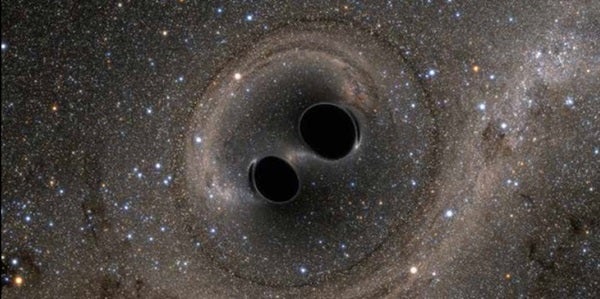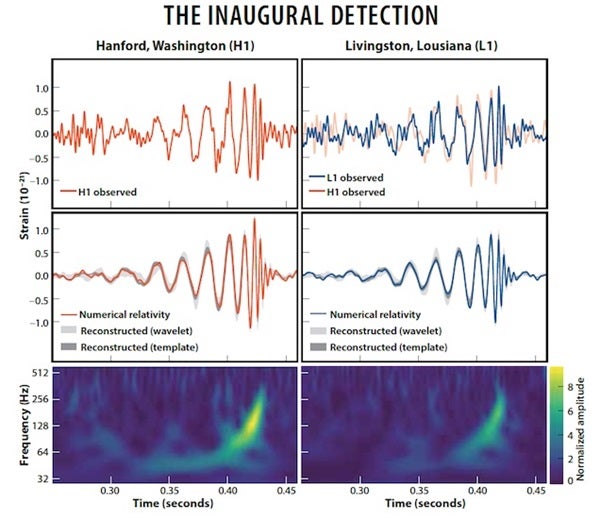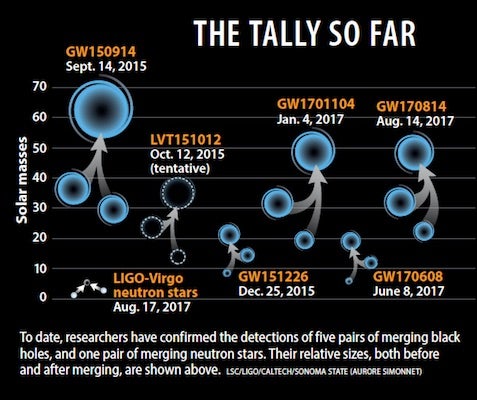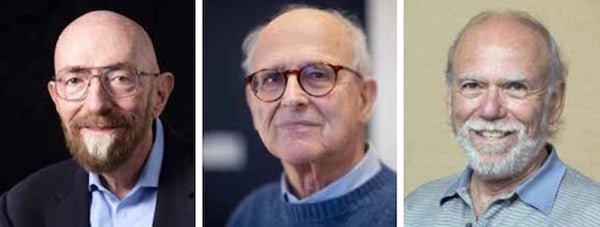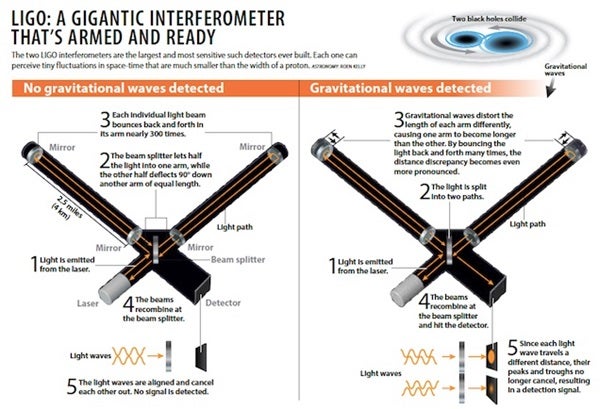But for all his creative insights into the natural world, Einstein underestimated the ingenuity of humankind. He viewed his prediction of gravitational waves as a mere mathematical curiosity, and questioned whether they were physically real. Moreover, he doubted that future scientists could ever pick up these subtle space-time undulations. His calculations showed that these waves would be so feeble by the time they reached Earth that detecting them would require instruments of extraordinary precision far beyond the technology of his era.
We can excuse Einstein’s lack of faith; he was a product of his time. Early 20th-century astronomers had yet to discover black holes and neutron stars, which are incredibly dense cosmic objects that produce the strongest gravitational waves. And nobody back then was contemplating the possibility of multiple billion-dollar laser interferometers, each with arms 2.5 miles long.
LIGO’s discovery opened a window on the universe, creating a revolutionary new branch of science that can obtain information on nature’s most extreme events — events that would otherwise be hidden from view. Since colliding black holes generate no form of light, we can discern these cosmic cataclysms only from the way they contort the fabric of space-time.
In a mere fraction of a second, the black hole collision detected by LIGO converted about three times the mass of the Sun into gravitational-wave energy — with a peak power output of nearly 50 times that of the entire visible universe. But these waves diminished rapidly in intensity as they traversed space. By the time they reached Earth, after a journey that took about 1.3 billion years, they expanded and contracted space-time by 1/10,000 the width of a proton. It’s no wonder Rainer Weiss, Kip Thorne, and Barry Barish, three of LIGO’s key figures, shared the 2017 Nobel Prize in Physics: Detecting these minuscule fluctuations required a precision akin to measuring the 25 trillion-mile distance to the nearest stars to the width of a human hair.
Since this initial detection, LIGO has heard the gravitational rumblings of four additional black hole mergers (and a likely fifth), involving objects ranging from 8 to 36 solar masses. The most massive collision, the first one, produced a black hole of 62 solar masses. Two others produced black holes with masses of about 50 Suns. These initial results have shone a light on a population of stellar-mass black holes previously undetected by astronomers. In the coming years, astronomers will gain deep insights into this group of relatively massive stellar-mass black holes, how they pair up in binary systems, and how their merger rate has evolved over cosmic history.
Despite all the hoopla, accolades, and awards, the best is yet to come. Scientists and engineers are upgrading LIGO and Virgo, which will greatly extend their reach deeper into space and time. In the coming years, new laser interferometers in Japan and India will join the hunt, enabling even more precise localization of gravitational-wave sources for multi-messenger follow-up.
And Mother Nature isn’t just hitting the high notes; she is performing a veritable symphony with gravitational waves — though we cannot yet “hear” many of the instruments. However, by precisely timing the pulses of many dozens of millisecond pulsars sprinkled across the sky, radio astronomers will almost certainly be able to eventually pick out the bass notes coming from the inspiral of supermassive black holes, which contain millions or even billions of solar masses. Furthermore, astronomers combing through data from the European Space Agency’s (ESA) Gaia satellite are conducting a similar experiment by looking for slight changes in the positions of nearly a billion stars.
And in the early 2030s, ESA aims to launch its long-awaited Laser Interferometer Space Antenna mission — three spacecraft that will orbit the Sun as an equilateral triangle, firing lasers at one another to measure the distortions of space-time caused by low-frequency gravitational waves passing through our solar system. These waves will reveal countless orbiting stellar binaries in our Milky Way Galaxy, along with the mergers of monstrous black holes going nearly all the way back to the dawn of time.

